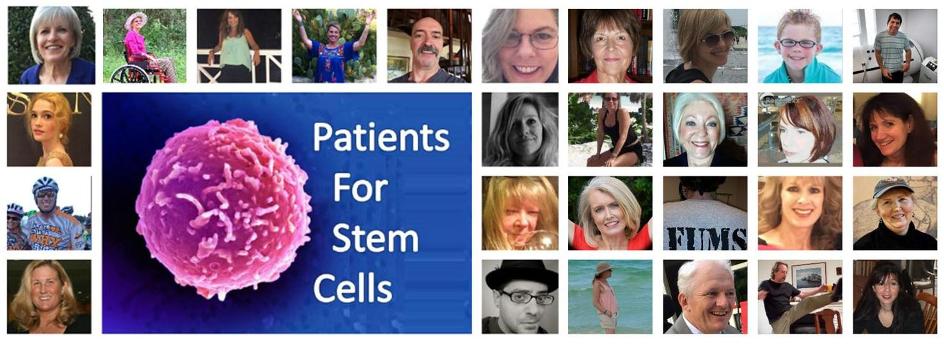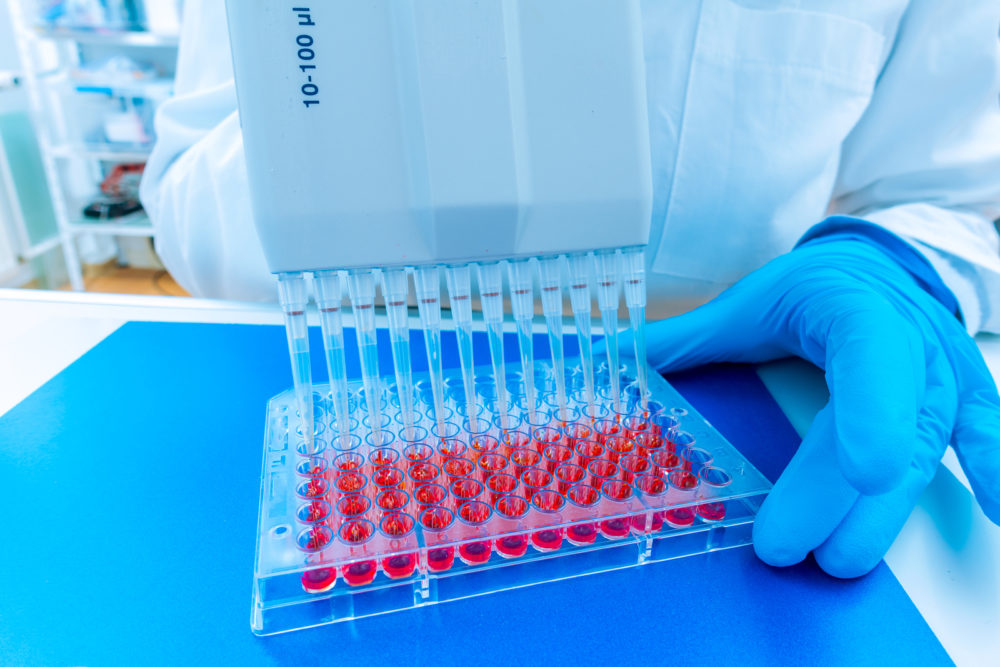Patients for Stem Cells (PFSC) started telling MD Monthly readers about stem cell therapy from the patients’ perspective in January 2015. PFSC told the history of the FDA removing access to this life-saving therapy that began in 1997, without the legally required public input, and the devastating impact this had on patients in 2012 when regulations went into effect.
Several of our members, who had treatments already in progress, had their progress and treatments halted. This launched our group on a mission to inform the public that everyone’s rights to this safe, effective therapy were being taken away, before most people even knew about it. After four years, we were happy to see our legislators join in by proposing the Regrow Act, to counter-balance the FDA’s blanket shut down.
The legislation is still in progress for 2016, but it may have to wait until after the election and get taken up in the 2017 session. Congress is in charge of monitoring the powers it grants the FDA, and as constituents, we can all make our voices heard when it comes to regenerative medicine.
In the meantime, the next round of restrictions is up for debate in September 2016, and this time the public was properly invited. In addition to strong interest from professionals in the field, we sent out the call for patients to register too, and the net result ended up swamping the FDA with over 600 registrations to attend or present. This included a 5 minute video by one of the founding members of PFSC. SammyJo Wilkinson represents all of our members’ concerns with her own story about recovery from long-standing multiple sclerosis (MS) with cellular therapy, despite the regulatory hurdles thrown in her way.
Recovery is a term not even used for neurodegenerative conditions like this, but in the video, she demonstrates real recovery by getting out of the wheelchair she’d been confined to for five years and using a walker again. In addition, 15 of the 28 MS symptoms she suffered from have resolved.
Dr. David Prentice of the Charlotte Lozier Institute, a long-time advocate for patient-focused adult stem cell treatments, points out that it is time for the FDA to update their regulations:
“Patients’ adult stem cells have been used successfully for dozens of conditions. The FDA can fulfill their role of insuring patient safety by modernizing their definitions and review process, allowing patients and their doctors to innovate and accumulate further data on efficacy of adult stem cell applications.”
 We urge all decision makers to revisit the FDA’s 2012 ruling, which holds that simply expanding one’s own mesenchymal stem cells (MSCs) to reach a therapeutic dose constitutes “more than minimal manipulation.” As long as the processing does not change the functional characteristics of the cells, we maintain that our own cells should not be classified a biological “product,” i.e. a drug. Classifying your own cells as a drug requires the lengthy FDA approval process that takes 10 years and $1 billion dollars for approval. Appropriate for drugs, but outdated for the safer approach of using your own tissues for restorative purposes.
We urge all decision makers to revisit the FDA’s 2012 ruling, which holds that simply expanding one’s own mesenchymal stem cells (MSCs) to reach a therapeutic dose constitutes “more than minimal manipulation.” As long as the processing does not change the functional characteristics of the cells, we maintain that our own cells should not be classified a biological “product,” i.e. a drug. Classifying your own cells as a drug requires the lengthy FDA approval process that takes 10 years and $1 billion dollars for approval. Appropriate for drugs, but outdated for the safer approach of using your own tissues for restorative purposes.
The same type of FDA ruling is about to be extended to cellular therapies that are already in use, in some cases for decades. Not only are stem cells at stake, but so are procedures using other tissue, either from yourself or a donor.
Cataract treatments
Cell therapy reversed blindness for 47,000 patients in 2015. So why is it against the law? Fox News recently pointed out the irony of the FDA’s position because it would make corneal cell transplants illegal.
Breast reconstruction
Alexey Bersenev, Director of the Advanced Cell Therapy Lab at Yale University, calls out the lapse in medical understanding by the FDA on “homologous use.” This would jeopardize another common procedure, using fat from another part of the body to help with breast reconstruction and augmentation. Once again, this is not stem cells. The FDA says “it is not considered as ‘homologous use’ since primary function of breast tissue is producing a milk.” Alexey has it right, the FDA is getting it totally wrong. And that’s okay, as long as they listen and learn from the experts in the field, and correct their errors.
Umbilical Cord Blood stem cell transplant for cancer care
The move to require FDA approval for adding fat to breasts brings up another inconsistency. Chemo used to kill cancer cells in patients also kills the bone marrow; transplants of bone marrow-derived stem cells are used to replace damaged marrow, if a match can be found. If it can’t be matched, it is currently allowed to let even second degree relatives use cord blood. This is not homologous use. The minimal manipulation rule is also waived, as the cord blood cells are banked, frozen in cryopreservation, processed and/or shipped. All of this has been considered minimal manipulation that does not change the characteristic of the cells or their function.
Orthopedics
Procedures such as knee and hip repairs are currently not regulated in cases where stem cells are extracted from bone marrow, and given back to the same patient the same day, to repair bone, ligament, tendon, muscle and cartilage. This is currently allowed under the definitions of autologous, homologous and “minimal manipulation.” The proposed new guidance from the FDA tightens the definition of “homologous use” and defines the only FDA-recognized use as “hematopoietic reconstitution” for cancer bone marrow transplant. The further aim of the FDA’s new rules seems to be to classify the output, the patient’s own cells, as a “product” and thereby redefine it as a “drug,” removing it from use in the current practice of medicine for orthopedics.
Solutions
Dr. Arnold Caplan of Case Western Reserve will be presenting at the FDA hearing as well. He provided the basis for many of these treatments when he discovered MSCs in 1991. Dr. Caplan and his colleagues are regarded as the leading experts on cellular therapy. In an article with Dr. Camillo Ricordi, Director of Diabetes Research, University of Miami, they lay out a constructive solution that must be given serious consideration. Dr. Ricordi holds:
“Stem cell clinics that are currently operating lawfully under the designation of ‘practice of medicine’ would not be subject to the new regulatory pathway. The FDA currently allows limited use of autologous, homologous and minimally manipulated cells if donor consent and good tissue practices are observed. New legislative proposals offer the opportunity for improved oversight over stem cell clinics operating outside the practice of medicine. New regulatory approaches can and should involve close monitoring, providing the FDA with the data necessary to assess long-term safety and efficacy in this rapidly emerging field. All individuals and organizations that deliver cell therapies, including those that fall both within and outside of the practice of medicine, should participate in reporting to a new, publicly accessible registry.”
The first paragraph refers to physicians in the U.S. already providing services, such as orthopedics, using “minimal manipulation.” The second covers treatments such as SammyJo’s. Access to such treatments for patients could be expedited using the conditional approval plan outlined in the editorial, with safety oversight by the FDA, using the patient outcomes registry. Such a registry has already been launched by orthopedic physicians, the Interventional Orthopedics Foundation Registry.
It is an election year and time for change. We are faced with the loss of medical rights and access to medical treatments in this country. Have we lost sight of our basic patient rights? The Human Rights Act of 1998 states, “If the right to health is considered a fundamental human right, significant differences in access to healthcare and the health status of individuals must be seen as violations of the principle of equality.”

We want that right. We are allowing an overreach of power within a government agency to deny the chronically ill a chance at life-saving treatment. The Constitution protects a person’s freedom of choice in medical care, including the right to refuse unwanted medical treatment and rights preserving the doctor-patient relationship. Certainly, then, it must protect a person’s decision, made in conjunction with their doctor, to try promising treatments that may save their life.
If you are a professional involved in regenerative medicine, please urge your professional societies to get involved. Everyone can contact their representatives and send them a link to this article at celltherapynow.org.
If you or someone you care about could be affected by any of the medical issues that stem cells can help, now is the time to ensure patients are not stripped of their rights to use this life-saving therapy.
For more information visit www.patientsforstemcells.org.







Recent Comments